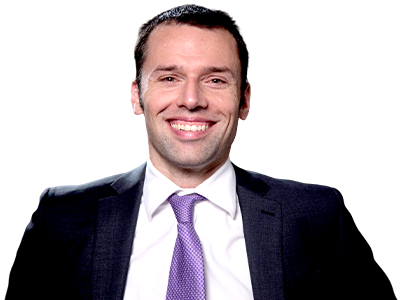Hosted By

Chief Executive Officer Cheeky Scientist
Skip ahead to:
00:13:10 Show Me The Data
00:33:43 Donna Serdula
01:01:13 Kristeena Wright, PhD
Are you utilizing your LinkedIn profile to its Full Potential?
We reached out to one of the world’s foremost LinkedIn profile pioneers…
This week on the Cheeky Scientist Radio Show, we are joined by Donna Serdula: author, LinkedIn expert, and founder of LinkedIn-Makeover.com.
Donna has created an optimization methodology specifically for LinkedIn and built an entire business around this concept. Donna will talk about how her organization works to help professionals stand out in the crowd and ultimately land their dream job.
We are also joined by Kristeena Wright, PhD, Application Scientist at Advanced Instruments. Kristeena will talk about her career transition as an application scientist and what she’s doing in her current role.
About Our Guests
Donna Serdula LOVES LinkedIn, and is one of the foremost experts on LinkedIn profile optimization. Her current mission: to help people create an impactful online professional brand that leads to amazing opportunities.
With over 40 writers on her team at LinkedIn-Makeover.com, Donna has helped thousands of executives, entrepreneurs, professionals, and companies from all over the world tell their unique story and successfully brand themselves on LinkedIn. Donna is also the author of LinkedIn Profile Optimization for Dummies and LinkedIn Makeover: Professional Secrets to a Powerful LinkedIn Profile, in which she shares her proven formula for LinkedIn success.
Donna has been featured in Business Insider, Time, Wall Street Journal’s Market Watch, and many other news outlets.
Kristeena Wright, PhD, works as a scientist at Advanced Instruments, driving the development of scientific content to support the value of osmolality testing in Biopharma. Kristeena entered the world of academic science as an undergrad research assistant at Duke University. She went on to obtain her PhD in Biomedical Sciences before completing a postdoctoral fellowship at Boston Children’s Hospital. She is a motivated spokesperson for endometriosis research, as shown by multiple publications, international presentations, and in-person petitions to US legislators and a dedicated STEM mentor.
Key Takeaways
1. LinkedIn quizzes are becoming more populous – use them to your advantage!
2. Your LinkedIn profile should let people in on who you are, why you do what you do, and what you stand for.
3. Application scientists must be versatile collaborators who can work in exciting, fast-paced environments.
Unknown LinkedIn Features for PhDs: A Conversation With Donna Serdula
Isaiah: So, Donna, what’s new on LinkedIn?
Donna: There are so many changes, I’m really excited to talk to you about some of them! Formerly, on your profile, there were skills that you simply added. You just put them on your profile and that was it. All of a sudden, LinkedIn offered endorsements, which gave other people the ability to endorse you for those skill sets. And now, LinkedIn has this “take a skill quiz” option. So if you want to prove that you’re better than everyone else, that you truly have the right skills, this is the way to do it – you take a quiz. These are quizzes that the LinkedIn learning instructors put together, and they are graded on a curve. So it’s not that you have to get 100%, but you just have to do better than, you know, 95% or 80% of the other people who have taken that quiz. If you pass it, you get a nice little badge on your profile. This is something that I think recruiters and hiring managers are absolutely going to be on the lookout for.
Isaiah: I love this because one of the questions we get the most is, well, can’t anybody just put whatever skill they want on their skill list? I remember that when you first told me about this, there were only five quizzes on there, and now there are already a lot more, especially for those of you who are into programming or data. Even the basics – skills like Microsoft PowerPoint!
Donna: Now, what happens if you take the quiz and you fail? It could happen. But if it does happen, no one is alerted. You get 3 months to study and get yourself where you need to be in terms of skill and knowledge. Then you can take it a final time, and hopefully, this final time, you pass! So no one is at any point alerted that you didn’t pass. And if you only just barely bass, don’t worry – you still get the badge. No one’s badge says “61%” or something. It’s a pass or fail type of deal. And people are only alerted if you pass.
Isaiah: Just the fact that you’re taking the quizzes, sharpening your skills, and willing to put yourself out there will help with employers. But also it makes LinkedIn happy. And who knows? Maybe they give you a little extra boost in their algorithm.
Donna: You know, there are certain jobs that are actually asking you to take a quiz to prove that you really want to apply for the job. I think you’re going to see that more and more.
Isaiah: And it’s only a matter of time before they start implementing quizzes on business concepts like due diligence, or in specific arenas like medical affairs. It’s going to build out from here.
…
Donna: Years ago, I had this epiphany that your LinkedIn profile is not your resume. Your resume has to align with a specific job. But your LinkedIn profile, on the other hand, is more about your career future. It’s who you are – your digital introduction or first impression. It’s your calling card, your elevator pitch. And it really needs to let people in on who you are, why you do what you do, and what you stand for. Why do you have a PhD? Why are you looking to get into corporate America? What’s driving you? That’s what excites people. And that’s what this is all about. I really think of it as branding – we’re helping people tell their story and LinkedIn is the best vehicle to do it.
Application Scientist Career Track: A Conversation With Kristeena Wright, PhD
Isaiah: So Kristeena, I was just telling people about why I love the application scientist position. How long have you been on the job now?
Kristeena: It’s actually been just over a year now. I started October 15th of last year.
Isaiah: Well, happy work anniversary! That’s great. What did you enjoy most about the job right after you started?
Kristeena: Honestly, I would say that going from my postdoc straight into this position, I appreciate how quickly things have kept moving. I think there’s something to be said for taking your time and feeling comfortable, but for me, it was actually really beneficial to go slightly out of my comfort zone and into this industry position. So I kind of hit the ground running! I’m at a company of about 100 people, so I’m the only application scientist. They had a lot of stuff lined up for me to take care of, so there was plenty to do as soon as I started. That was really exciting, just having that fast pace.
Isaiah: What does your average workday look like?
Kristeena: What’s great about my position at Advanced Instruments is that it’s very cross-functional. Technically, I’m part of the marketing department, which was very new to me when I was hired. But then another large aspect of what I do is pre-and-post-sale support for the sales team. I also interact a lot with the R&D team in the lab. So typically, I work closely with the product manager on a specific device, and we are both very cross-departmental.
Isaiah: That defines the application scientist role very, very well: “cross-departmental.” You’re doing a lot of coordinating and communicating. But the nature of the role is helping people apply a company’s product or service. So you’re like this conduit between the company and its different departments: the sales team, the marketing team, maybe the executives, etc. And the clients! Are your clients scientists? Clinicians…?
Kristeena: So we make Osmo monitors, which are not common. They’re typically used in the clinical field, so Advanced Instruments started out more as a clinical company, but now we’re starting to see them become more and more relevant–critical, really–in biotech. We do have clinical technician clients, but I’m specifically working with the biotech division at our company. That means I work with a lot of process development scientists and manufacturing scientists – a lot of people who have similar backgrounds to me, really! It’s like being the liaison, if you will, between our company and all of those departments and the scientists within biotech. It’s a unique, very specific area, but there’s plenty to be done for sure…
** for the full interviews, check out the video above
To get advanced access to the full length versions of these podcasts, as well as access to our live training webinars, exclusive training videos, case studies, industry insider documents, transition plan, and private online network, get on the waitlist for the Cheeky Scientist Association now.










